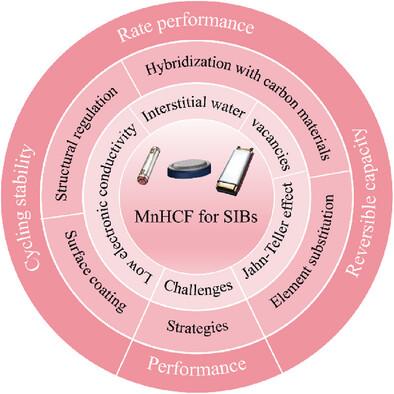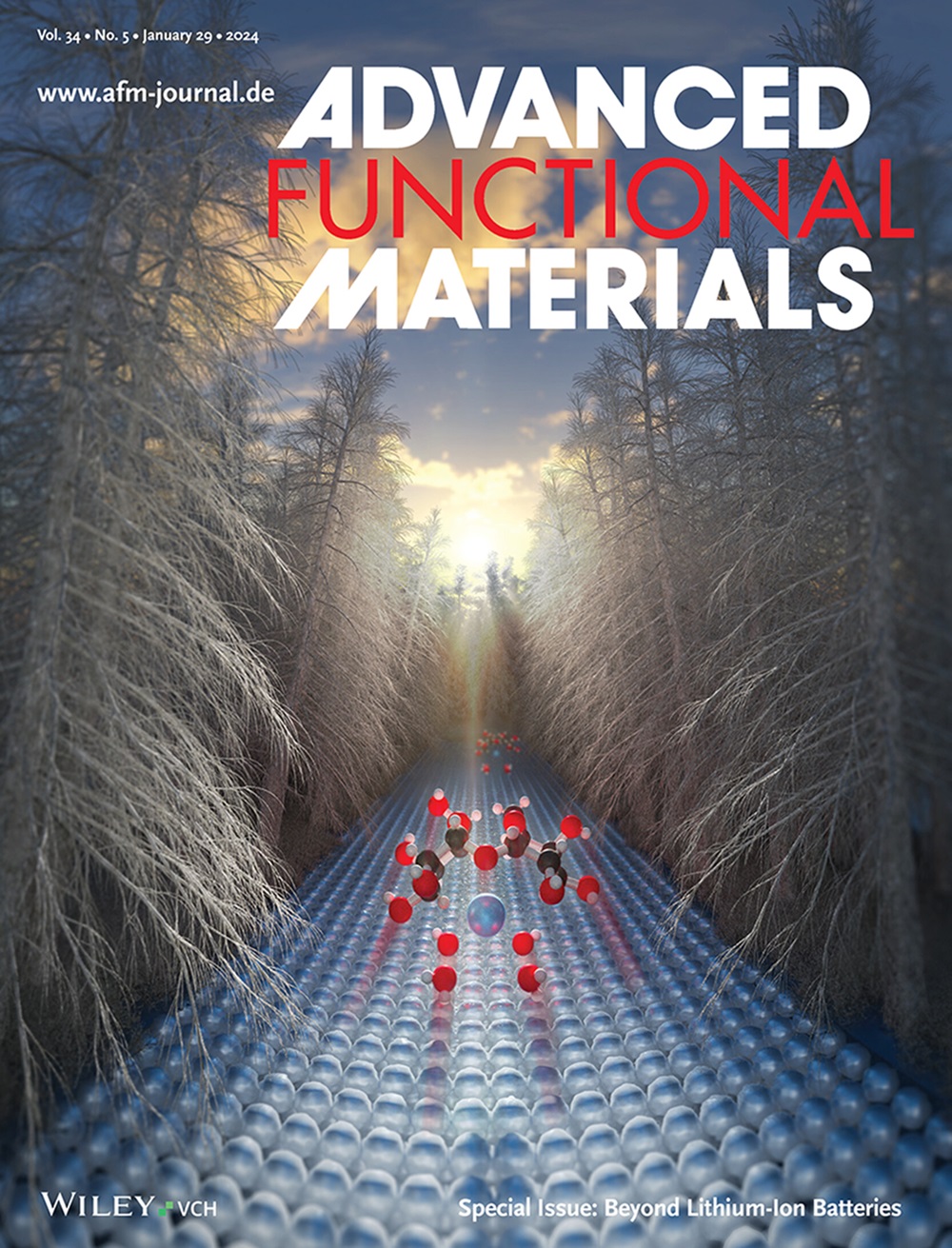Challenges and Strategies toward Manganese Hexacyanoferrate for High-Performance Sodium-Ion Batteries
IF 18.5
1区 材料科学
Q1 CHEMISTRY, MULTIDISCIPLINARY
引用次数: 0
Abstract
Sodium-ion batteries (SIBs) are considered as a beneficial complement to lithium-ion batteries for large-scale energy storage systems because of the abundant sodium resources. However, the relatively large ionic radius of Na+ inevitably results in a huge volume change and sluggish electrochemical reaction kinetics, which put forward higher requirements for electrode materials. Among the reported cathode materials for SIBs, the manganese hexacyanoferrate (MnHCF) with the merits of large channels for fast sodium ion transport, high theoretical capacity and low cost has attracted extensive attention. In this review, the recent achievements of MnHCF for SIBs are focused. The key challenges of MnHCF limiting the practical application include the interstitial water, vacancies, low electronic conductivity, and the Jahn-Teller effect. Subsequently, the mainstream strategies to boost the sodium storage performance of MnHCF are summarized (such as structure regulation, surface coating, hybridization with carbon materials, and element substitution). Finally, the potential research directions are also proposed to promote the practical application of MnHCF for SIBs. This review is expected to provide a whole insight into exploring MnHCF cathode materials for SIBs.

高性能钠离子电池六氰基铁酸锰的挑战与战略
由于钠资源丰富,钠离子电池(SIB)被认为是大规模储能系统中锂离子电池的有益补充。然而,由于 Na+ 的离子半径相对较大,不可避免地会导致巨大的体积变化和迟缓的电化学反应动力学,这就对电极材料提出了更高的要求。在已报道的 SIB 阴极材料中,六氰合铁酸锰(MnHCF)具有大通道快速传输钠离子、高理论容量和低成本等优点,引起了广泛关注。本综述将重点介绍 MnHCF 用于 SIB 的最新成果。MnHCF 在实际应用中面临的主要挑战包括间隙水、空位、低电子电导率和 Jahn-Teller 效应。随后,总结了提高 MnHCF 储钠性能的主流策略(如结构调整、表面涂层、与碳材料杂化以及元素替代)。最后,还提出了潜在的研究方向,以促进 MnHCF 在 SIB 中的实际应用。本综述有望为探索用于 SIB 的 MnHCF 阴极材料提供全面的见解。
本文章由计算机程序翻译,如有差异,请以英文原文为准。
求助全文
约1分钟内获得全文
求助全文
来源期刊

Advanced Functional Materials
工程技术-材料科学:综合
CiteScore
29.50
自引率
4.20%
发文量
2086
审稿时长
2.1 months
期刊介绍:
Firmly established as a top-tier materials science journal, Advanced Functional Materials reports breakthrough research in all aspects of materials science, including nanotechnology, chemistry, physics, and biology every week.
Advanced Functional Materials is known for its rapid and fair peer review, quality content, and high impact, making it the first choice of the international materials science community.
文献相关原料
| 公司名称 | 产品信息 | 采购帮参考价格 |
|---|
 求助内容:
求助内容: 应助结果提醒方式:
应助结果提醒方式:


